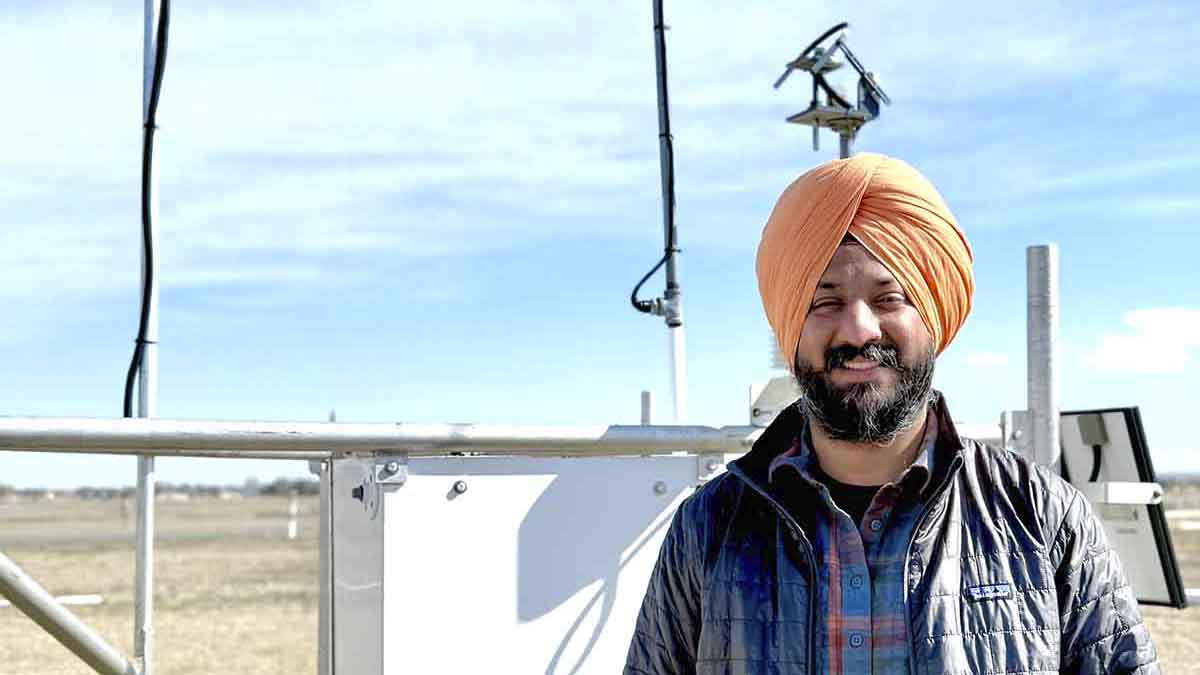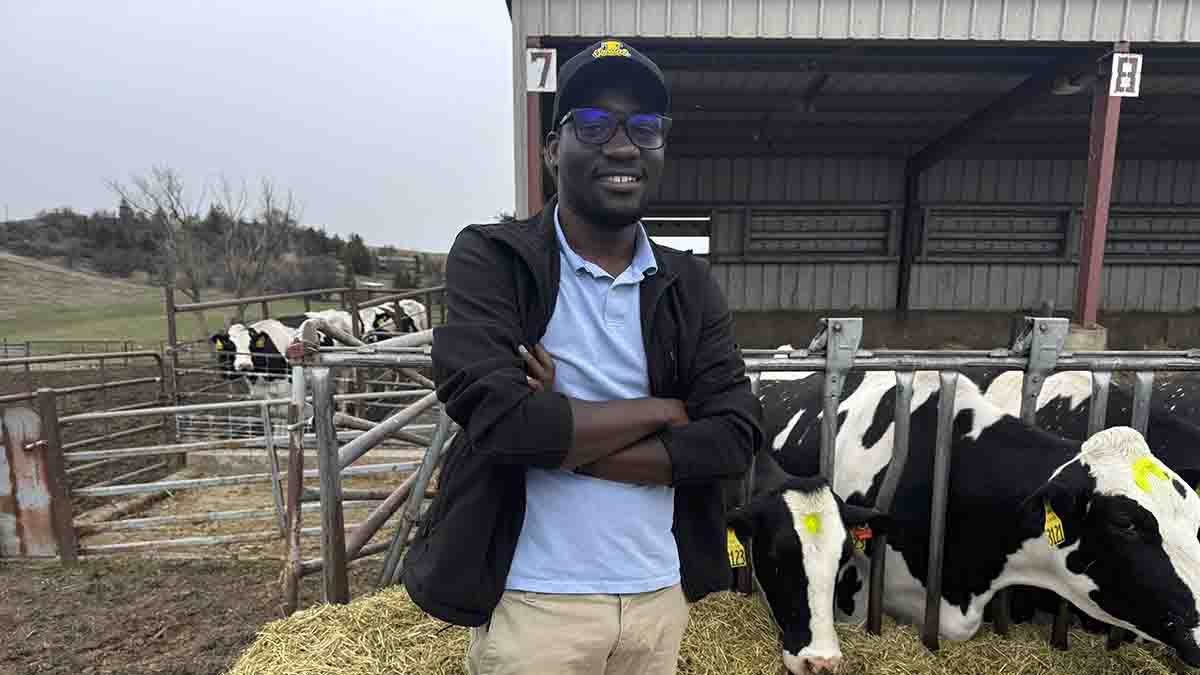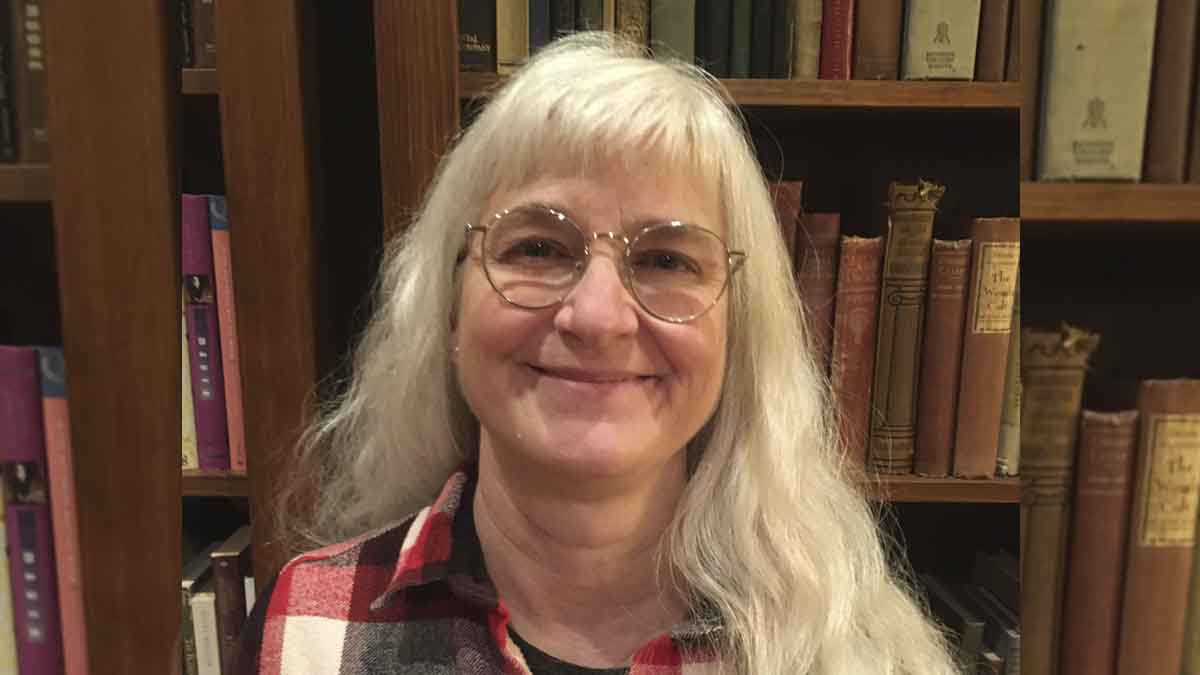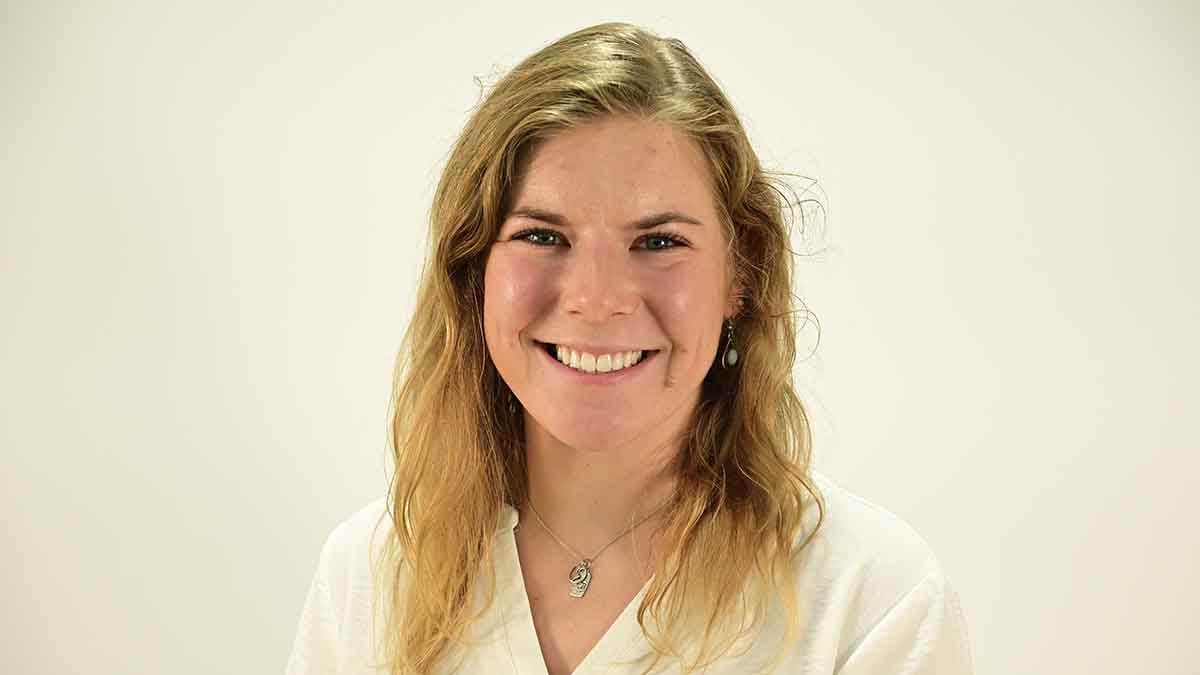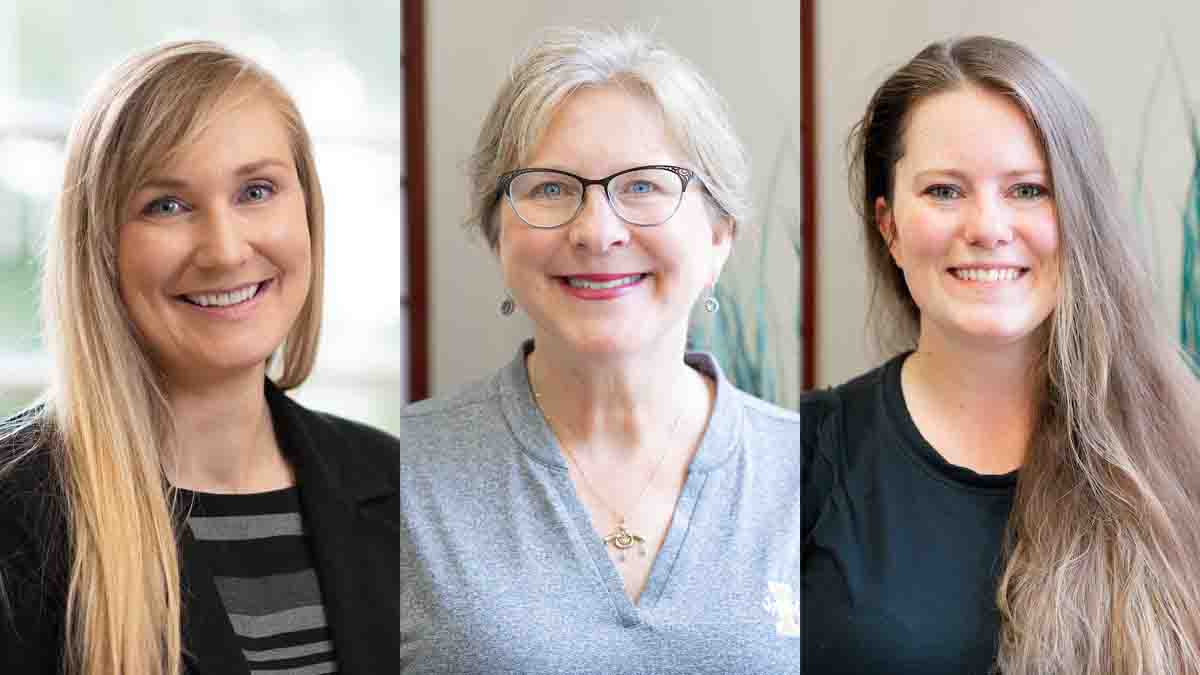Catching Up with CALS — April 2, 2025
Dean's Message — No Ordinary Dairy
The Idaho Center for Agriculture, Food and the Environment (Idaho CAFE) promises to be a unique facility in the United States, generating impactful research benefiting the state’s important dairy industry and more. Located in the Magic Valley, CAFE will include the nation’s largest research dairy, conducting studies at a commercial scale to produce findings with optimal real-world value. The U of I-led project will bring together a broad team of scientists representing the private sector, government agencies and other universities. CAFE will be the largest facility within the Idaho Agricultural Experiment Station, and we anticipate milking the first cows there by early 2026. It’s an exciting, forward-looking and fitting investment in a state that ranks third in the U.S. for dairy production at roughly 17 billion pounds of milk per year. The dairy industry accounts for a third of Idaho’s agricultural sector, supporting more than 33,000 jobs. Along with unprecedented opportunities, CAFE brings some unique challenges. It’s important that we recognize it will be no ordinary dairy to run and that we’re realistic in our expectations regarding what it will take to maintain, operate and staff the facility.
CAFE will be one of several CALS service centers, which provide research, education and outreach in support of the state’s economy, generating revenue toward operational costs through sales. A few other examples of CALS service centers include our laboratories that provide pest and disease testing services to farmers, Vandal Brand Meat sales, user fees to the U of I Food Technology Center in Caldwell, where training and facilities are offered to help aspiring food entrepreneurs produce and package food products for resale, and the Analytical Sciences Laboratory on the Moscow campus that processes samples in support of various faculty-driven research projects. While we cover substantial portions of our operating costs through sales at our service centers, they’re not commercial operations, and by their nature they are not for-profit enterprises. Our service centers serve other key functions, such as generating research to help agricultural businesses improve profitability, training a qualified workforce and bringing external research funding into the state. Research at CAFE, for example, will help develop strategies to mitigate environmental impacts from animals, housing areas, manure systems and in-field applications, advancing the dairy industry’s ability to meet consumer’s ever-increasing expectations. The facility will even seek markets for dairy manure, which may be made into valuable byproducts such as bioplastics and transportable fertilizers. A water and soil health demonstration farm adjacent to the dairy will accommodate feed production, nutrient management and complementary agronomic research — exploring relationships between crop and animal agriculture.
As a research-focused enterprise, CAFE will have constraints upon its ability to produce milk efficiently and profitably that don’t encumber commercial dairies. The facility will initially milk up to 400 cows, compared with an average Idaho dairy herd of over 2,000 cows. CAFE will have the capacity to accommodate a herd of up to 2,500 cows once all phases of the buildout are complete. As the herd size increases over the first few years, it will start to benefit from some of the economies of scale comparable with commercial dairies, but it remains a research and educational facility. “The last cow through your barn is the most profitable,” said Pete Jones, CAFE project manager. Furthermore, when milk prices drop, commercial dairies can add animals to increase output. Research needs rather than economics will drive management of the CAFE herd. “If something goes sideways on a commercial dairy, you do whatever you have to do to get things back to right,” explained Rick Naerebout, CEO of Idaho Dairymen’s Association. “On a research dairy you have to preserve that research and maintain the integrity of that research. That’s going to add costs to make sure those protocols are in place.” CAFE’s labor costs will also likely be above industry standards. Naerebout notes CAFE will require a highly trained workforce. “You need workers who are going to understand the research that’s going on with the animals they’re working with, follow the protocols and have an appreciation for that research,” Naerebout said.
Exploring several avenues for funding CAFE in the future must be a top priority for both our college and university. The state’s dairy industry has been extremely generous in its support of CAFE. We will continue to work with the dairy industry and our other industry partners to help CAFE meet its potential. We’ll also pursue opportunities to partner with USDA on CAFE research and facility construction, building upon the $1 million appropriation in community project funding, secured by Rep. Mike Simpson, to support nutrient management technology at the research dairy.
We are excited to showcase the progress at CAFE. Last summer, legislators were invited to see the site work and the commencement of construction of the milking parlor. We will be extending the invitation again to members of the Legislature’s Joint Finance-Appropriations Committee (JFAC) and other interested lawmakers this summer, now that the milking parlor is complete and construction of the maternity and commodity barns and classrooms is underway. Once the dairy is operational, our state legislators will have the opportunity to see CAFE in action, witnessing the return on investment they stand to reap from the facility in terms of research and student training. In February, U of I officially joined the ranks of the nation’s top research institutions, becoming the first Idaho university to earn the prestigious R1 designation in the 2025 Carnegie Classification of Institutions of Higher Education. CAFE will undoubtedly play a key role in helping us maintain that status. Furthermore, CAFE has the potential to elevate Idaho’s prestige as a top dairy state, while also providing answers to some of the toughest research questions facing the industry.

Michael P. Parrella
Dean
College of Agricultural and Life Sciences
By the Numbers
University of Idaho Extension has an enormous positive impact on Idaho communities. UI Extension includes 135 faculty members and produced 199 peer-reviewed publications and professional journal articles in 2024. Also during the year, Extension made 450,103 direct teaching contacts with stakeholders. More than 75,000 youth participated in UI Extension 4-H Youth Development programming. Extension web pages were viewed 683,161 times. Furthermore, 2,599 Idaho food handler’s certificates were distributed to high school students taking the Ready, Set, Food Safe curriculum; 979 pesticide applicators met Idaho state licensing requirements through the accredited Pesticide Safety Recertification online series, 403 in-person digital skills trainings were facilitated by the Digital Economy Program, 350 beginning master gardeners from 18 counties participated in online courses and 269 community partners delivered Eat Smart Idaho programming, resulting in $11.62 in economic benefits for every dollar spent to administer the program.
Our Stories

New Concept in Water
Researchers from University of Idaho (U of I) and University of Colorado Boulder (CU Boulder) have created a new metric to help farmers, researchers and practitioners better track and prepare for prolonged periods of extremely high evaporative demand.
Meetpal Kukal, an assistant professor of hydrologic science and water management with U of I, and Mike Hobbins, a senior research scientist with CU Boulder, have coined “thirstwaves” as a broad concept explaining when evaporative demand remains elevated for days at a time. Evaporative demand describes conditions governing the movement of water from the Earth’s surface into the atmosphere.
Their paper “Thirstwaves: Prolonged Periods of Agricultural Exposure to Extreme Atmospheric Evaporative Demand for Water” was published March 20 in the journal “Earth’s Future.”
In certain regions and seasons, windspeed, humidity or solar radiation from sunshine, rather than heat, drive evaporative demand. Evaporative demand drives evapotranspiration, as long as sufficient soil water is available.
“In this whole domain of environmental change and its impacts, we’ve been sort of obsessed about heat and heatwaves,” explained Kukal, who is the paper’s lead author. “As far as water consumption by vegetation is concerned, including agricultural crops, there are other variables besides temperature that are equally, if not more, important, and that includes humidity, wind speed and solar radiation.”
Their study evaluated the gridMET surface meteorological dataset covering the contiguous U.S. states from 1981 through 2021 growing seasons. They defined a thirstwave as having occurred any time when during at least three consecutive days daily evaporative demand was greater than its 90th percentile recorded historically.
Agricultural water managers traditionally consider mean values in their assessments. Thirstwaves, by contrast, focus on extremes persisting over multiple days.
“If one were to look only at means it appears the southwest desert is the most extreme from a thirst standpoint. However, when you start looking at extremes, places that do not necessarily have high evaporative demand stand out as outliers,” Kukal said. “The Midwest, for example, is not as consequential from a mean evaporative demand standpoint, but from an extreme standpoint it is really a hot spot.” Kukal published this evidence last year in the journal “Environmental Research Letters.”
During prolonged durations of extreme stress from high heat, low humidity, high wind or high solar radiation, irrigation deliveries and equipment may not be able to put out water fast enough to keep up with demand.
Kukal is currently developing a decision-support dashboard to help southern Idaho farmers manage irrigation, factoring in the possibility of such extreme conditions and design limitations of irrigation systems. He and Hobbins looked at three unique aspects of thirstwaves from historical records: intensity, the number of events and the duration. They concluded all three aspects have been worsening over time, with thirstwaves becoming more intense, greater in number and more frequent.
“These findings make us think about how our current water resources infrastructure, irrigation equipment and water management should mitigate and adapt,” Kukal said. “As these pressures grow, there’s less and less room for guesswork in irrigation, so if you are under limited water conditions, you’ve got to do a better job at really tracking your water.”
The researchers are optimistic that the concept of thirstwaves will add an important new framework to help agriculture bring the picture of evapotranspiration monitoring and forecasting for maintaining economic productivity into sharper focus. Kukal’s research program at U of I is building on Idaho’s capacity to monitor and predict evapotranspiration to aid in decision-making.
“This idea of thirstwaves I think is really going to catch on,” Hobbins said. “It’s a very powerful metric and it’s a crucial distinction from heatwaves because we have been hobbled for decades by this idea that temperature is really the only place where the information is.”

Curbing Dairy Emissions
University of Idaho’s new Extension air quality specialist, Gilbert Miito, grew up on a mid-sized dairy — at least by the standards of the village of Masaka in central Uganda.
Each morning, Miito and his three brothers awoke at 6 a.m. to milk and tend to their family’s six dairy cows. The boys would bike throughout the countryside in search of tall grass, which they swathed with sickles and pedaled to their corral to feed the herd.
The rustic dairy of Miito’s childhood contrasts starkly with the state-of-the-art University of Idaho facility where he’ll soon be conducting research to help the state’s dairy industry characterize and curb its greenhouse gas emissions. The Idaho Center for Agriculture, Food and the Environment (Idaho CAFE) will be the largest research dairy in the U.S. when it starts milking operations in Rupert in early 2026. CAFE will initially house 400 cows and will gradually grow its capacity to accommodate a herd of up to 2,500 animals.
In Uganda, a typical “big” dairy has about 10 cows, while a small dairy might simply comprise a couple of cows tethered to trees, with most of the milk used for home consumption.
“Having animals is a source of prestige in Uganda,” Miito said. “The milk is amazing. It’s very organic — natural, grassfed.”
Miito began working at U of I’s Twin Falls Research and Extension Center on Jan. 6, having completed his undergraduate education in his home country before moving to the Pacific Northwest to earn a doctorate in biological systems engineering from Washington State University, where he researched manure management and emissions. He accepted a postdoctoral research position at the University of Missouri, also working with manure management systems. He then returned to the West to accept a position with a private company in California, BioFiltro, where he designed, built and supervised the assembly of biological treatment systems using worms and microorganisms to filter liquid dairy waste.
When he saw a posting for the UI Extension position, Miito was enticed both by the perfect fit to put his experience and skills to use and the opportunity to work at a world-class research dairy.
“There is a lot of buzz around dairy farms and emissions, so there is a lot of opportunity around that,” Miito said. “The fact that we have CAFE as a research center, I think that improves our chances of getting a lot of these research grants.”
The second phase of construction of CAFE — including the maternity barn, research barn, commodity storage, lagoons and an office building with classrooms — is now underway and Miito has begun gathering baseline emissions data from the CAFE site. His work will focus on identifying best practices for managing, transporting, storing and using manure to minimize emissions of greenhouse gases such as methane. He’s also teamed up with U.S. Department of Agriculture researchers in Kimberly to aid in federal dairy emission studies.
Some of the collaborative projects with USDA have involved working with private, commercial dairymen. He’s also helped the federal agency research emissions from manure spread over research plots and lagoon water applied via pivots.
“Right now, we are doing a whole-farm study, getting to understand all of the processes on a dairy farm and how they contribute to emissions to understand the hot spots on a dairy farm and then do some mitigations to test,” Miito said.
Most dairy emissions come from the combination of enteric emissions — essentially methane and ammonia in cow belches resulting from fermentation of feed in the rumen — and emissions from dairy manure. Regarding enteric emissions, Miito plans to evaluate various feed additives to change cows’ biochemistry to minimize emissions. He also intends to study a few options to minimize emissions from lagoons, such as trapping emissions and flaring them off and adding sulfuric acid to chemically change lagoon water and reduce ammonia emissions.
Separating solid and liquid waste is another proven strategy to reduce emissions. Miito intends to study the environmental benefits of more frequent cleaning of solids from dairy lagoons, as well as the use of improved technology for separating dairy liquids and solids.
Animal housing practices also affect dairy emissions. Miito will research how the designs of barns and ventilation systems affect emissions, as well as benefits to be gained through regular cleaning of pens.
In addition to conducting important research to help the dairy industry address forthcoming challenges, Miito views himself as an advocate for the industry and a voice of reason in communicating the realities of the industry to the public.
“I am a link between the science and all of the noise out there, so I can easily tell whoever is making that noise, ‘Hey, this is how the numbers look. We need the dairy production. This is a byproduct and this is how we can deal with it.’”

AAAS Fellow
The American Association for the Advancement of Science (AAAS) has honored Shirley Luckhart, a professor within University of Idaho’s Department of Entomology, Plant Pathology and Nematology (EPPN), as a member of its 2024 class of fellows.
Luckhart, a founder and co-director of the U of I Institute for Health in the Human Ecosystem (IHHE), is among 471 scientists and engineers included in this largest AAAS class, announced March 27.
AAAS is more than 150 years old and is among the world’s largest general scientific societies, publishing the Science family of journals. The association chose to recognize Luckhart based on her “distinguished contributions to malaria with a focus on innate immunity in the mosquito and mammalian host.”
“It’s not just an infectious disease; it’s a disease of poverty and poverty drives this,” Luckhart said of malaria. “It’s a major impact on global economies and social structure, with cases of the disease impacting more than 260 million people’s lives each year. It’s a great human tragedy that deserves attention.”
Luckhart was first interested in diseases affecting wildlife as an undergraduate at the University of Florida. As a graduate student, she grew more broadly interested in zoonotic diseases, which are diseases of wildlife that also affect humans, often spread by arthropod vectors such as ticks, mosquitoes, fleas and biting flies. As her interests developed, Luckhart shifted to studying malaria, work that has been her focus for 30 years.
While completing a doctorate in entomology at Rutgers University, she focused on applying molecular biology, cell biology and biochemistry techniques to insect biology. She subsequently specialized in malaria from 1995-1998 as a National Research Council postdoctoral fellow at the Walter Reed Army Institute of Research in Washington, D.C., and she has been carrying that research forward ever since. Luckhart’s malaria research has been continuously funded by the National Institutes of Health since 1997.
Luckhart was a faculty member in Virginia Tech’s Department of Biochemistry from 1998-2004 and then worked for 13 years with the University of California Davis School of Medicine. She and her husband, Professor Edwin Lewis, joined U of I in 2017. Luckhart has a joint appointment in EPPN with the College of Agricultural and Life Sciences (CALS) and the College of Science Department of Biological Sciences. Upon arriving in Moscow, Luckhart and Lewis drafted a plan to launch the IHHE, which facilitates research and education on the impacts of environmental change and land and water use on health and disease, establishing a working model for communication and collaboration among researchers across plant, animal and human diseases.
The IHHE offers a six-day course covering the integration of vector-borne diseases affecting plants, animals and humans. Course participants come from many backgrounds, such as academia, government, non-governmental organizations, private industry and the military. In the first year of the course in 2018, the course drew 38 applicants. This year, more than 800 people representing 74 countries have applied.
“I’ve worked in departments of biochemistry, and in a medical school and in an agricultural school, and what’s really evident to me is we don’t appreciate enough about how human, animal and plant health are connected biologically in complex ecosystems,” Luckhart said. “It’s very difficult to develop sustainable strategies for any of these individual aspects of health without considering impacts on everything else.”
For example, some human and animal bacterial pathogens have become adapted to living and replicating inside plants, moving beyond surface contamination that can be washed off. This requires new approaches, for example, to ensure safety of leafy greens.
Luckhart’s laboratory is best known for its work on understanding the science of blood-feeding of mosquitoes on mammals — especially how components of a host’s blood affect mosquito physiology. For example, insulin levels rise in mammals infected with malaria, and elevated insulin consumed in a host’s blood can regulate a mosquito’s lifespan, reproduction and behavior. Luckhart’s laboratory has also demonstrated that malaria induces an allergic response in hosts that contributes to some of the pathology of the disease. In this context, malaria infections cause heightened histamine levels, and mosquitoes that consume blood with elevated histamine tend to be more active and feed more. Luckhart’s research, therefore, provides a foundation for novel strategies to reduce mosquito feeding and quell the spread of malaria.
Luckhart emphasized that becoming an AAAS fellow is also recognition for many colleagues and trainees who contributed to training and to these studies throughout the years. She’s most proud of her successes in training and mentoring others to appreciate largescale problems such as malaria, thereby “creating global citizens who understand the importance of public health and why it’s important to help other people.”
Faces and Places
Marina Steiner, a water resources graduate student advised by Professor Gregory Moller, was awarded the University of Idaho’s Graduate and Professional Student Association Outstanding Graduate Student Award. Steiner is collaborating with the Moscow-based nonprofit TerraGraphics International Foundation to investigate drinking water contamination in Uzbekistan linked to the Aral Sea Crisis.
The Idaho Academy of Nutrition and Dietetics announced award recipients on March 13 and will recognize the winners at its annual meeting in Boise on April 17. Annie Roe, an associate professor and Extension specialist within the Margaret Ritchie School of Family and Consumer Sciences (FCS) and director of Eat Smart Idaho, was awarded outstanding preceptor for the Master of Science in dietetics. Shelley McGuire, director of FCS, is the recipient of the Idaho Academy GEM Award. Annie Nelsen was chosen as the outstanding dietetics student for the master’s in dietetics.
Catie McCarthy, a junior from Donnelly studying animal and veterinary science: production option, received the Ron Richard Scholarship from the Northwest Meat Processor Association at the NWMPA Convention in Yakima, Washington. The scholarship is awarded to three students based on their scholastic accomplishments, career goals and extracurricular activities while attending a university in Oregon, Idaho or Washington.



Events
- April 1-2 — Vandal Giving Day, Online
- April 3 — Innovate Idaho: Teaching and Learning with AI Symposium, Online
- April 7 — CALS Speaker Series, Moscow
- April 7 — Digital Economy Program: Certified Remote Work Professional Course, Online
- April 8 — Idaho Home Garden Tips, Online
- April 16 — 2024-2025 Heritage Orchard Conference, Online
- April 17 — Pressure Canning Made Easy, Online
- April 30 — CALS Awards Banquet, Moscow







